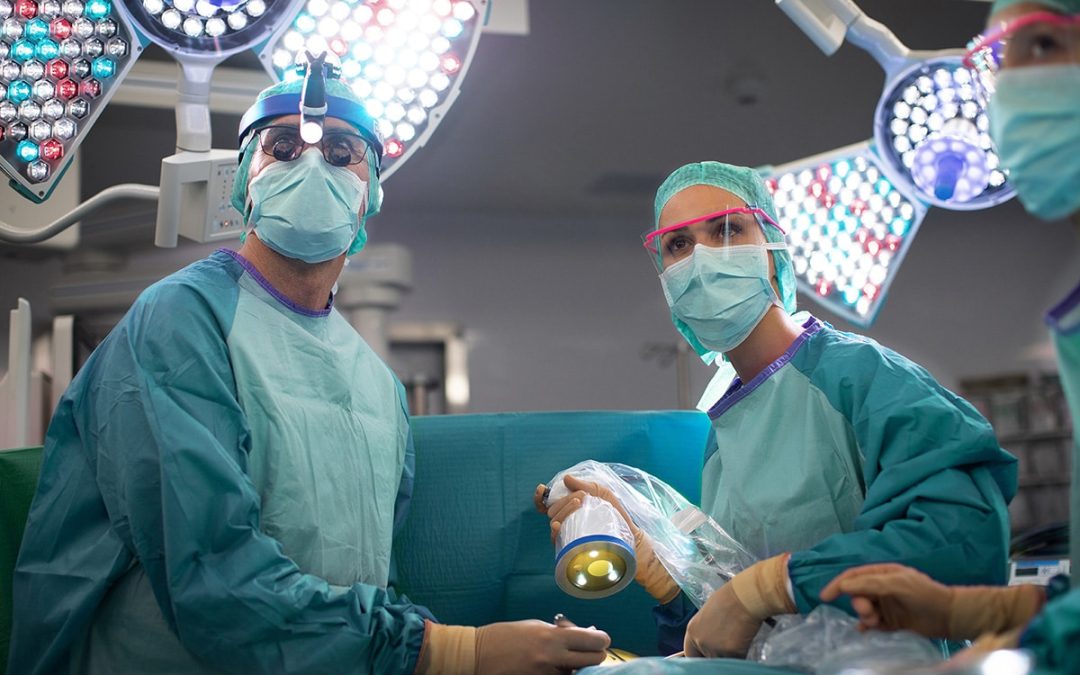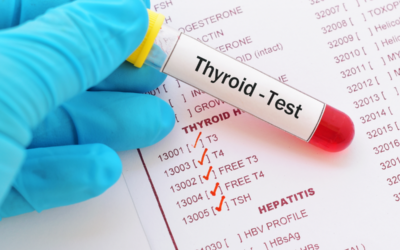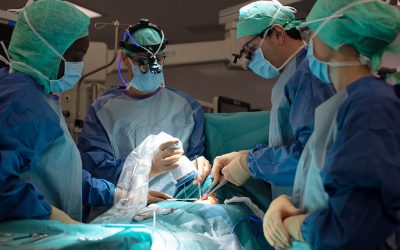Thyroidectomy (partial or total removal of the thyroid gland) is performed in around 45,000 patients in France each year, and in millions of people worldwide. Like any type of surgery, this procedure has risks and can cause postoperative complications.
FLUOPTICS© opens up new perspectives in endocrine surgery with its FLUOBEAM® imaging system based on autofluorescence technology, enabling detection of parathyroid glands in autofluorescence. By making It possible to view the parathyroid glands in real-time during surgery, it assists the surgeon and makes surgery safer. Today, FLUOPTICS© goes a step further with its launch of FLUOBEAM® LX, a device exclusively dedicated to thyroid and parathyroid surgery. A major innovation whose aim is to significantly reduce some of the risks inherent to this type of procedure.
To read more about it : How is thyroid dysfunction detected?
Thyroid surgery: what are its characteristics?
A thyroidectomy is the total or partial removal of the thyroid gland. This surgery is indicated in different situations, such as thyroid cancer, suspicious toxic nodules or cancerous cells, enlarged goiter, etc. It is performed under general anesthesia and involves making a small horizontal incision at the base of the neck. The thyroid gland, which produces the hormones T3 and T4, is responsible for regulating many vital bodily functions including metabolism, body temperature and heart rate.
A patient who has a total thyroidectomy must receive lifelong hormone replacement therapy (based on TSH level which is progressively adjusted).
What are the complications?
Thyroid surgery can cause a number of postoperative complications, mainly due to inadvertent damage to the pharyngeal nerves (the nerves of the vocal cords) which are exposed during surgery, or due to injury to the parathyroid glands, which are very small and difficult to see.
The risks of thyroid surgery are:
- Hypoparathyroidism (or hypocalcemia): when the parathyroid hormones can no longer regulate calcium levels after thyroid surgery (because the parathyroid glands were accidentally damaged or excised during surgery). In 90% of cases, this complication is reversible.
- Postoperative hematoma: this is a very rare complication which can be serious if the hematoma compresses the trachea.
- Hoarseness and difficulty swallowing: these are very common postoperative complications due to the position of the inferior pharyngeal nerves. These symptoms can last for up to eight weeks after surgery.
- Laryngeal dyspnea: breathing problems caused by a decrease in the caliber of the laryngheal branch (extremely rare).
- Postoperative hemorrhage: very rare.
Although these complications are rare if one looks at the total number of thyroid surgeries performed, they nonetheless occur in nearly 200,000 patients worldwide!
FLUOBEAM® imaging system
The FLUOBEAM® fluorescence imaging system has made great strides in thyroid surgery. Since 2015, it has been used in more than 2,000 thyroid surgeries to guide the identification of the parathyroid glands in autofluorescence. In close to 30% of cases, FLUOBEAM® Identified the parathyroid glands before the surgeon could even see them! Indeed, due to their small size, the parathyroid glands can be difficult to locate, even for a skilled surgeon, which may cause them to be accidentally damaged or excised. Thanks to their detection by autofluorescence, FLUOBEAM® makes surgery safer. One study showed that the rate of postoperative hypocalcemia could be reduced from 20 to 5%!
Used across several surgical indications – breast reconstruction, endocrine surgery, hepatic surgery – this polyvalent system has been roundly applauded by the scientific community.
The first imaging system approved (in Europe and the United States) for looking at the parathyroid glands by autofluorescence, intraoperative fluorescence imaging technology was designed to be used in a variety of surgical procedures and so there is still room for improvement in this particular indication. Therefore, based on the experience acquired over several years of FLUOBEAM® use, FLUOPTICS© has devised a solution dedicated to thyroid and parathyroid surgery.
FLUOBEAM LX: a tailor-made device for thyroid and parathyroid surgery
To better meet the needs of surgeons, FLUOPTICS© is introducing the new FLUOBEAM® LX, specifically developed and dedicated to thyroid and parathyroid surgery in order to provide optimal ease of use in this indication. With a sensitivity, specifically adapted to detect low level of fluorescence intensities, it allows the detection of parathyroid glands in autofluorescence with suitable Image fluidity (25 images per second), a large depth of field and a use compatible with the ambient lighting of the operating theatre.
Designed to be held effortlessly above the operative field, and controlled with one hand by the surgeon, FLUOBEAM® LX is a true third eye which makes thyroid surgery safer.
Benefits for patients
FLUOBEAM® LX is a significant technological advance in the field of thyroid surgery. Above all it helps reassure patients, who are often worried about undergoing thyroidectomy. The FLUOBEAM® LX system dedicated to thyroid surgery could greatly reduce certain postoperative risks: reduced rate of auto-transplantation, postoperative hypocalcemia, hoarseness and swallowing problems, etc.
Benefits for surgeons
In the operating theatre, FLUOBEAM® LX facilitates the surgeon’s work by assisting the surgeon in accurately identifying the parathyroid glands (located near the thyroid gland), enabling them to be seen in real-time and preserved during surgery. An even more powerful imaging system that means surgeons can operate in optimal conditions for more accurate surgical decisions.
FLUOPTICS©: 10 years of research and innovation
The European expert in fluorescence imaging guided surgery, FLUOPTICS© , in collaboration with research teams from around the world, has developed a line of products (the fruit of 10 years of research) enabling real-time visualization during surgery of physiological and pathophysiological phenomena, whichh are often invisible to the naked eye, to improve the quality of surgery.
With the new FLUOBEAM® LX, FLUOPTICS© takes another technological leap forward in thyroid surgery to better address patients’ health issues and make surgery safer. An improved imaging solution designed exclusively for the specifics of thyroid and parathyroid surgery, to better guide surgeons.





